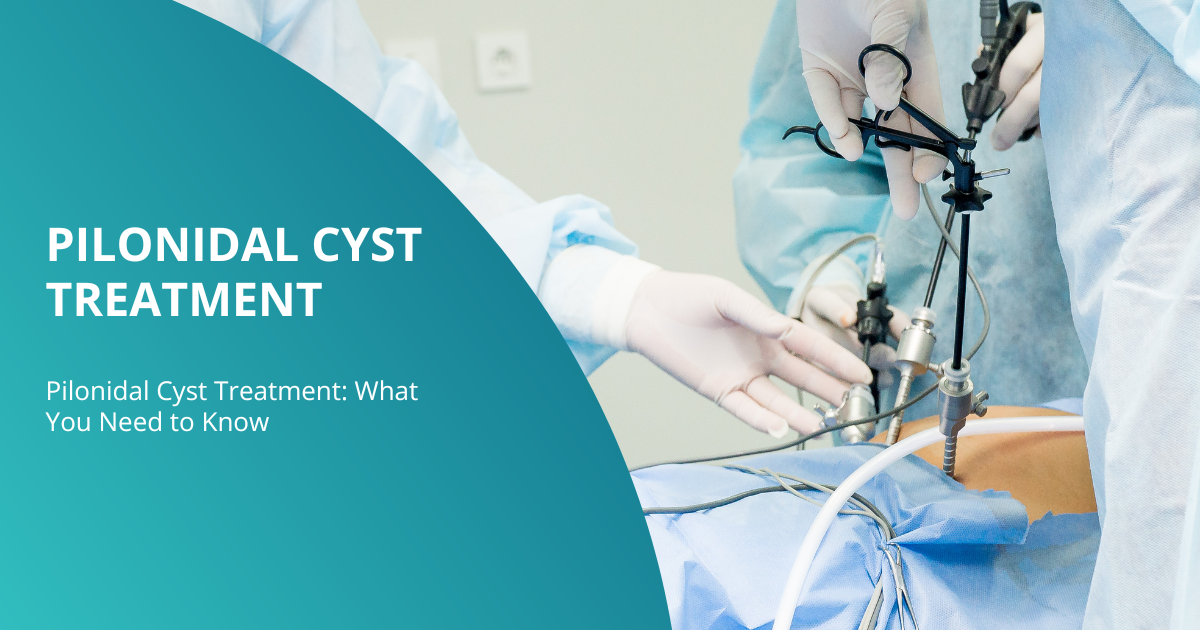A pilonidal cyst does not necessarily need any symptoms. It is basically a small hole that is caused in the skin of your buttocks. People often tend to ignore it until and unless it actually diverts into an infection and needs serious Pilonidal Cyst treatment. It is also important to understand that such an issue can lead to pain or swelling. It may even happen that you tend to develop a pus-filled abscess. Therefore, the moment you get to see a small lump on your buttocks, you should not wait to see a doctor without any delay.
However, it is extremely crucial to ensure that you are keeping the area in between the buttocks clean all the time. Ensure –
- taking a shower or a bath on a regular basis
- also take care of the fact that you are not shaving the area until and unless you are recommended by your physician to do so!
What would you do for a pilonidal cyst treatment?
The treatment for a pilonidal cyst will depend on the –
- symptoms you have got
- the size of your sinus
- also on the fact that whether or not it is your first time or it has been coming back repeatedly.
You can easily fetch pilonidal cyst antibiotics from any of the local stores. The pus inside it may get drained. Or else you might need to treat it the other way. If your cyst keeps coming back even after it had recovered prior, you might need to get in touch with the physician at the earliest. Most doctors will usually give you painkillers, or paracetamol alongside various anti-inflammatories that might help to reduce the pain or swelling.
Causes of pilonidal cyst
Pressure or friction may lead to the pilonidal cyst. It is still not very clear what causes this pilonidal cyst. A skin problem may also stand to be the cause! Some other reasons that could possibly contribute to this issue would include –
- having loose hairs that had shed off your buttock region
- or in case you have got some hair growth all of a sudden in that area.
- Also, people who tend to have jobs while sitting for most of the time of the day are more likely to get such complications.
- It is even observed that people who are overweight or obese are getting these troubles more often than others.
Besides, if you are someone who has thick hair growth on your body, chances are that you may get pilonidal cysts. Your skin condition can worsen if you are wearing tight clothes all throughout the day.
Such pilonidal cysts are seen to be more common among men than that of women since the former tend to be hairier.
Diagnosis
A medical practitioner will be the best person to help you identify whether or not you have got a pilonidal cyst by checking your affected area at a glance. He might also need to know about your –
- personal habits
- medical history
- the symptoms that you might have!
Commonly, your medical provider will ask you to go for an MRI or a CT for any cavity that has formed underneath your skin area.
Is pilonidal cyst hereditary?
Yes, a pilonidal cyst can prove to be hereditary. Thus, doctors too often ask for your medical history. You are more likely to get one in case any of your family members had it earlier!
Pilonidal cyst: is it contagious?
Researchers today stated that pilonidal cysts are caused by ingrown hairs. Well, it is priced that they are absolutely non-contagious. Also, it cannot just spread from one area to that of another.
Symptoms of pilonidal cysts
The pilonidal cyst complications include pain and inflammation in your buttocks area. It may even cause you foul-smelling pus alongside draining blood from the wound. In certain cases, it can even give you –
- fever
- fatigue
- weakness
- nausea.
Can a woman get a pilonidal cyst while being pregnant?
It is not always mandatory to have a pilonidal cyst if you are a man. But even pregnant women may get that! If you are witnessing pain in your buttocks, you must contact your medical provider. Also, get it checked instead of ignoring it as just a discomfort.
Pilonidal cyst treatment: Ways out!
Once you have been diagnosed with one or more pilonidal cysts, your physician will provide you with a medical plan that will best fit your individual case. Make sure that you are adhering to it. Based on the symptoms you exhibit and the severity of your cyst, your healthcare provider will give you the treatment program. Also, he will advise you for surgery. There are several other treatment options available as well:
- Antibiotics:
Regular medication can treat your pain and inflammation.
- Injections:
Phenol, a chemical compound, is effective in mild to moderate cases.
- Draining the cyst:
This is one of the most common options that most people tend to opt for! Draining the pus and blood by cutting open the wounded area can sort it out.


















